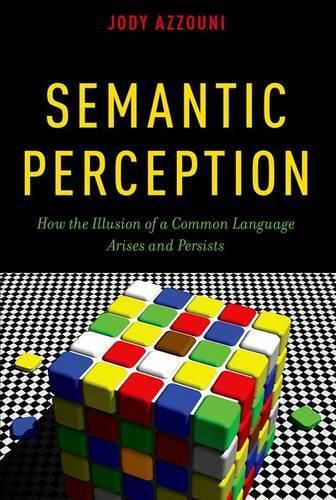Readings Newsletter
Become a Readings Member to make your shopping experience even easier.
Sign in or sign up for free!
You’re not far away from qualifying for FREE standard shipping within Australia
You’ve qualified for FREE standard shipping within Australia
The cart is loading…






Jody Azzouni argues that we involuntarily experience certain physical items, certain products of human actions, and certain human actions themselves as having meaning-properties. We understand these items as possessing meaning or as having (or being capable of having) truth values. For example, a sign on a door reading Drinks Inside strikes native English speakers as referring to liquids in the room behind the door. The sign has a truth value–if no drinks are found in the room, the sign is misleading. Someone pointing in a direction has the same effect: we experience her gesture as significant. Azzouni does not suggest that we don’t recognize the expectations or intentions of speakers (including ourselves); we do recognize that the person pointing in a certain direction intends for us to understand her gesture’s significance. Nevertheless, Azzouni asserts that we experience that gesture as having significance independent of her intentions. The gesture is meaningful on its own. The same is true of language, both spoken and written. We experience the meanings of language artifacts as independent of their makers’ intentions in the same way that we experience an object’s shape as a property independent of the object’s color. There is a distinctive phenomenology to the experience of understanding language, and Semantic Perception shows how this phenomenology can be brought to bear as evidence for and against competing theories of language.
$9.00 standard shipping within Australia
FREE standard shipping within Australia for orders over $100.00
Express & International shipping calculated at checkout
Jody Azzouni argues that we involuntarily experience certain physical items, certain products of human actions, and certain human actions themselves as having meaning-properties. We understand these items as possessing meaning or as having (or being capable of having) truth values. For example, a sign on a door reading Drinks Inside strikes native English speakers as referring to liquids in the room behind the door. The sign has a truth value–if no drinks are found in the room, the sign is misleading. Someone pointing in a direction has the same effect: we experience her gesture as significant. Azzouni does not suggest that we don’t recognize the expectations or intentions of speakers (including ourselves); we do recognize that the person pointing in a certain direction intends for us to understand her gesture’s significance. Nevertheless, Azzouni asserts that we experience that gesture as having significance independent of her intentions. The gesture is meaningful on its own. The same is true of language, both spoken and written. We experience the meanings of language artifacts as independent of their makers’ intentions in the same way that we experience an object’s shape as a property independent of the object’s color. There is a distinctive phenomenology to the experience of understanding language, and Semantic Perception shows how this phenomenology can be brought to bear as evidence for and against competing theories of language.